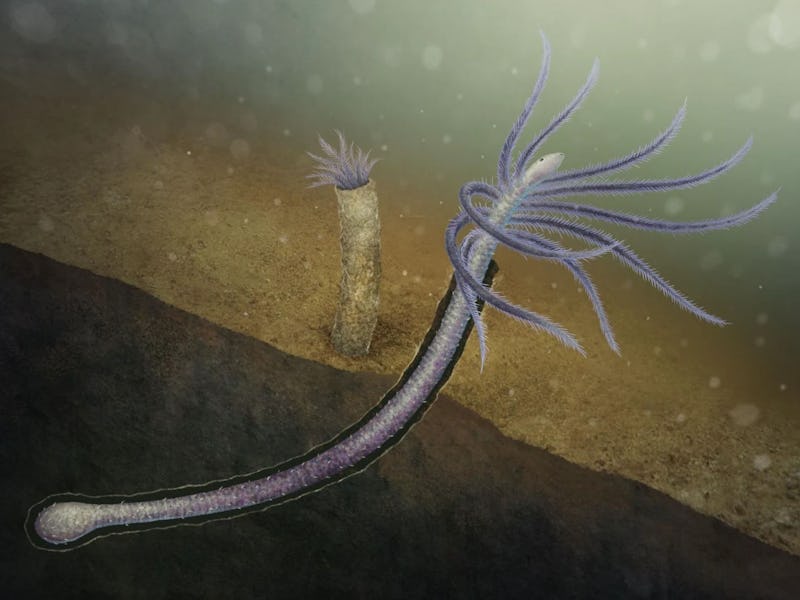This ancient worm-like creature is an evolutionary miracle
It is pure fate that we do not share the Earth with them.

Consider the worm. The wriggling, slimy creatures that break down dead leaves into plant food. The same worms you may or may not have accidentally stepped on by the side of the road on a rainy day.
Now picture these worms... but with legs.
It is not a nice thought. But a study published earlier this year in Current Biology found we came very, very close to sharing our world with limbed worms. The reason: an ancient, worm called Facivermis.
INVERSE IS COUNTING DOWN THE 20 STORIES THAT MADE US SAY 'WTF' IN 2020. THIS IS NUMBER 10. SEE THE FULL LIST HERE.
Mystery has long surrounded the evolution of Facivermis, a worm-like creature that lived approximately 518 million years ago in the Cambrian period.
In the paper, the authors describe the worm-like creature as having a serpentine body and spindly, protruding parts. These terrifying creatures dwelled on the ocean floor during the Cambrian period, roughly 518 million years ago.
According to the research, the Facivermis made an evolutionary leap which has ramifications today: the species shed its hind legs early in its evolution. This ran contrary to what researchers thought they knew about how these early animals developed over time, with the prevailing consensus assuming "worminess" was a "primitive feature," Xiaoya Ma, a co-author on the study and a researcher from the Natural History Museum, told Inverse at the time.
“Our findings show Facivermis had lost its back legs and become worm-like to suit its tube-dwelling lifestyle, think of a modern tube worm,” Ma says.
It seems Facivermis is the most ancient creature we know of to shed its own limbs as it evolved.
We typically think of evolution as adding more body parts to organisms — basically, making organisms more complex — but the opposite was true for Facivermis, which effectively evolved back to a more primitive state to suits its bottom-dwelling needs.
Scientists had previously considered Facivermis the "missing link" between lobopodians — worms with protrusions all along their body — and cycloneuralian worms, which resemble modern worms.
Hallucigenia, prehistoric aquatic animals from the Cambrian Period (3d paleoart illustration banner)
But this study suggests otherwise.The findings contradicted previous studies to suggest Facivermis was a limbless worm from the very beginning. Now, we know the creature did have limbs at one point.
As a result, the scientists are back on the hunt for the missing link.
"We simply have no candidate fossil now that it's clear Facivermis doesn't fit this description,” Ma says.
INVERSE IS COUNTING DOWN THE 20 STORIES THAT MADE US SAY 'WTF' IN 2020. THIS IS NUMBER 10. READ THE ORIGINAL STORY HERE.